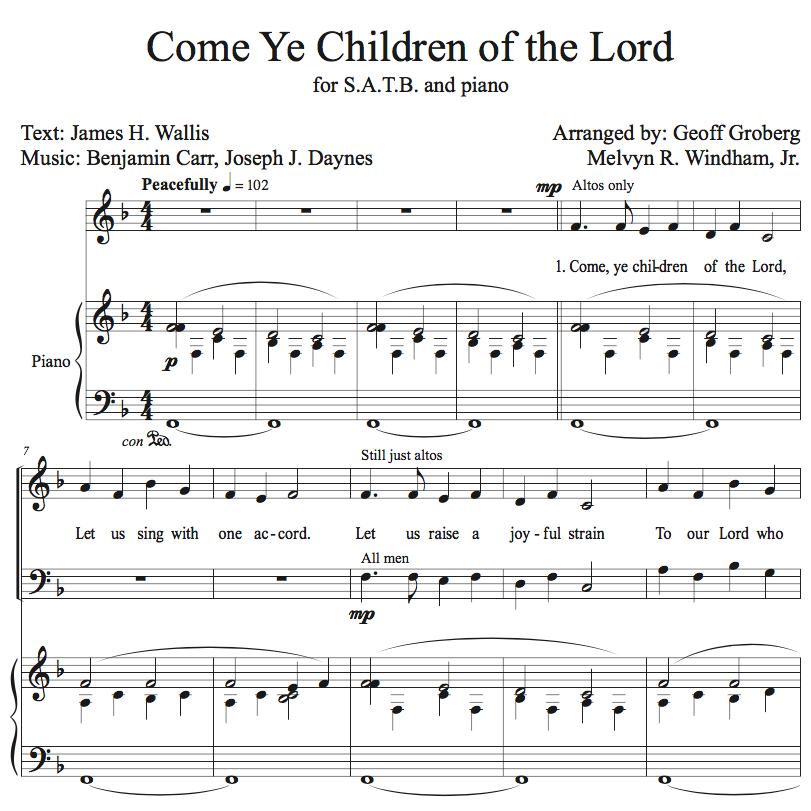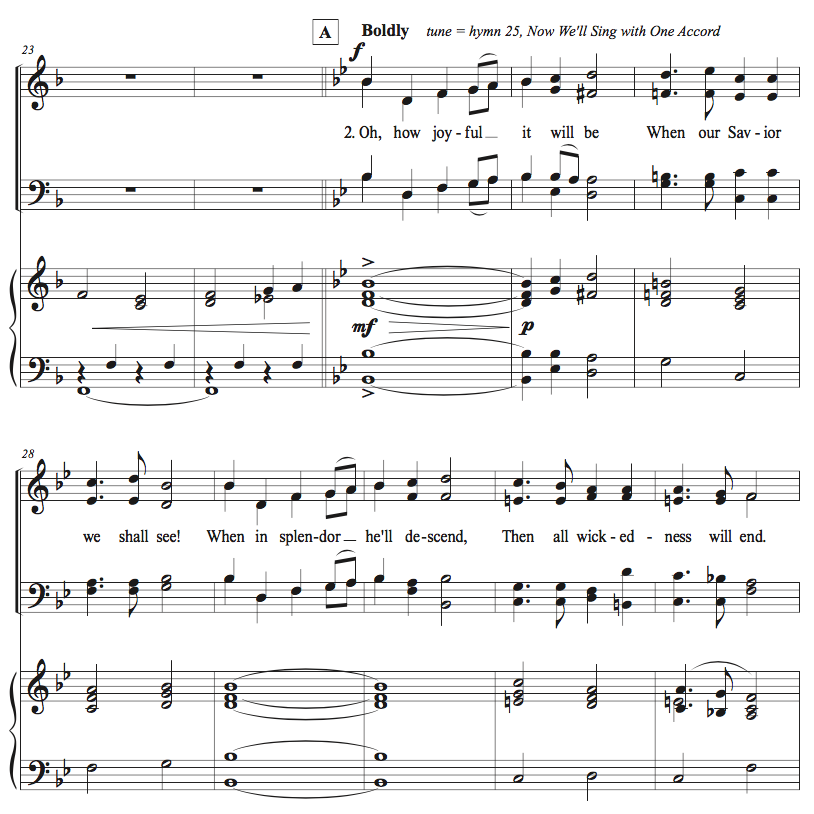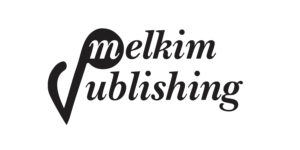“Come Ye Children of the Lord” for SATB choir is another Geoff Groberg/Melvyn Windham collaboration. For this piece, we wanted to do something simple, yet still interesting. All of the choral parts come straight from the hymnbook with minor adjustments, so rehearsals should go quicker. The piano accompaniment is simple, but explores different harmonies.

Also, we wanted to change things up a bit by mixing in another hymn tune. This is a practice actually encouraged in the current LDS hymnbook (1985). If you have a copy handy, open to page 405 to the section titled “METERS,” which provides a chart arranged by meter patterns. If two hymns have the same pattern, then you can sing the words of one hymn to the tune of the other. (If you don’t have a hymnbook handy, you can see a similar chart here that includes hymns in other languages.)
It’s kind of like being able to sing every Emily Dickinson poem to “Yellow Rose of Texas” or even the Gilligan’s Island tune. This pattern of 7-6-7-6 also fits “If You Could Hie to Kolob” and “Improve the Shining Moments.”
Some may ask, should this practice be done? For example, when I sing “If You Could Hie to Kolob” to the Gilligan’s Island tune, it makes me want to bust up laughing, especially the “There is no end to …” parts.
To answer the question, I will echo what is written in the hymnbook: “When matching texts and tunes, be sure to consider mood and word accents, as well as meter.”
For the choir piece Geoff and I put together, we chose to set the second verse to Joseph J. Daynes’ hymn “Now We’ll Sing with One Accord” (Hymn #25), which appears to fit the mood perfectly, while at the same time introduces a hymn tune that is not quite so well known throughout the LDS Church.

Practice and Performance Tips:
The most difficult part in learning this piece will most likely be the second verse, which is an unfamiliar hymn with chromatic lines near the end (that is, plenty of accidentals). Since the piano part doubles most of the problematic spots, it shouldn’t take too long to learn. Though, I should probably warn that once you learn the tune, it will be difficult to get it out of your head.
First verse: The altos begin singing the melody. Since this verse is a perfect fourth lower than in the hymnbook, it fits their range very well. The men come in singing the melody on the second line. The sopranos come in at the third line, singing the original alto part an octave higher, which creates a nice effect. This whole verse should be sung quietly and peacefully.
Second verse: As mentioned above, this verse will most likely take the most work. The singing parts come straight out of the hymnbook (except for one note in the bass) with dotted rhythms smoothed out to eighth notes (to help fit the words better). Sing this verse boldly, but save some volume for the last verse.
Third verse: Here, the singing parts return to the original “Come Ye Children of the Lord” with parts straight from the hymnbook. Sing it loudly, and don’t let the piano overcome the choir. At the very end, the last couple of words are given longer rhythms, so watch out.
In all, this should be a quick piece to learn and perform in almost any church service.
Sound sample:

Leave a Reply